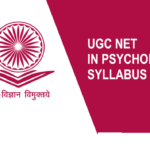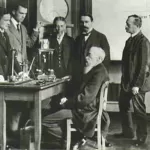Perception, the process by which we interpret and make sense of the world around us, is a multifaceted phenomenon influenced by various factors. Signal Detection Theory (SDT) is a framework that delves into the intricacies of perception, shedding light on the underlying assumptions and applications that shape our cognitive experiences. This blog aims to provide an in-depth exploration of Signal Detection Theory, touching on subliminal perception, information processing, cultural influences, perceptual styles, pattern recognition, and the ecological perspective on perception.
Signal Detection Theory: Assumptions and Applications
Signal Detection Theory serves as a powerful tool for understanding how individuals make decisions in the presence of uncertainty. At its core, SDT assumes that perception involves the detection of signals (stimuli) in the presence of noise (background stimuli). The theory posits that individuals are engaged in a process of discriminating between relevant signals and irrelevant noise, leading to four possible outcomes: hits, misses, correct rejections, and false alarms.
Applications of SDT extend across various domains, including psychology, medicine, and communication. In psychology, SDT has been employed to study sensory processes, decision-making, and cognitive performance. In medicine, SDT aids in diagnostic procedures by evaluating the accuracy of medical tests. In communication, the theory is applied to analyze how individuals interpret and respond to messages in the presence of noise.
Subliminal Perception and Related Factors:
Subliminal perception involves the processing of information below the threshold of conscious awareness. SDT provides insights into how individuals may or may not detect subliminal stimuli and the implications of such detection on subsequent behaviours. The role of factors such as attention, motivation, and individual differences in susceptibility to subliminal messages is crucial in understanding the complexities of subliminal perception.
Information Processing Approach to Perception:
The information processing approach to perception posits that the mind actively processes sensory information to construct perceptions. SDT aligns with this perspective by emphasizing the role of decision-making in perception. This approach highlights the sequential stages of perception, including encoding, storage, and retrieval of information, providing a framework to explore how individuals make sense of the world.
Culture and Perception:
Culture exerts a profound influence on perception, shaping the way individuals interpret and respond to stimuli. SDT helps unravel the cultural nuances in perception by acknowledging that cultural background can impact the sensitivity to signals and the criteria for decision-making. Understanding the interplay between culture and perception is crucial for fostering cross-cultural communication and promoting cultural competence.
Perceptual Styles:
Individual differences in perceptual styles contribute to the richness and diversity of human perception. SDT accommodates these variations by recognizing that individuals may adopt different decision criteria and sensitivities to signals based on their perceptual styles. Exploring these styles enhances our understanding of how people navigate and interpret their environments.
Pattern Recognition:
Pattern recognition is a fundamental aspect of perception, allowing individuals to identify and categorize stimuli based on learned patterns. SDT elucidates the decision-making process involved in pattern recognition, elucidating how individuals distinguish between meaningful patterns and random noise. This has implications for fields such as artificial intelligence and cognitive science.
Ecological Perspective on Perception:
The ecological perspective on perception posits that the environment plays a crucial role in shaping perceptual experiences. SDT aligns with this perspective by emphasizing the dynamic interaction between the individual and the environment in decision-making. Understanding perception from an ecological standpoint enhances our appreciation of how individuals adapt to their surroundings and make sense of the information available to them.
Conclusion:
Signal Detection Theory serves as a comprehensive framework for unravelling the complexities of perception. From its assumptions and applications to subliminal perception, information processing, cultural influences, perceptual styles, pattern recognition, and the ecological perspective, SDT offers valuable insights into the intricate world of human cognition. By exploring these facets, we deepen our understanding of how individuals perceive and interact with their surroundings, paving the way for advancements in psychology, medicine, communication, and beyond.







